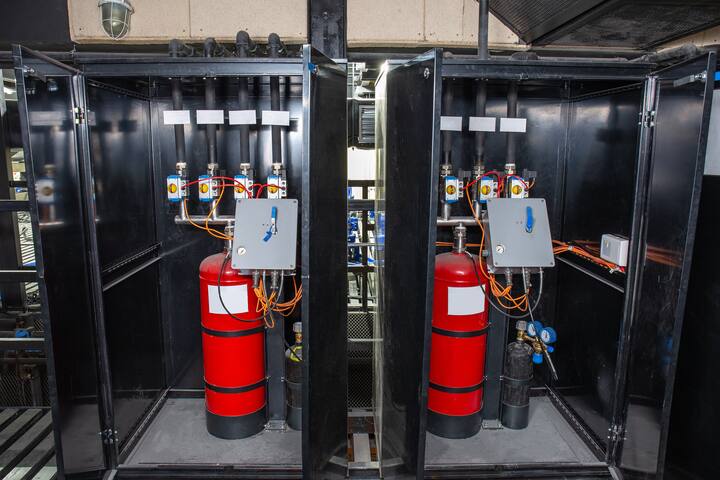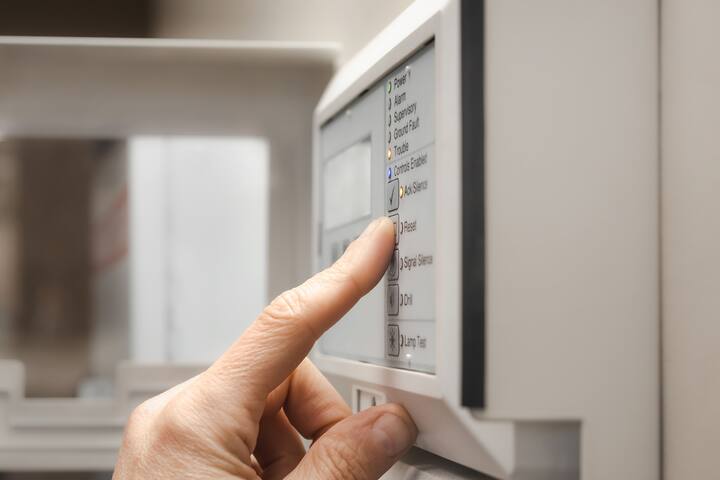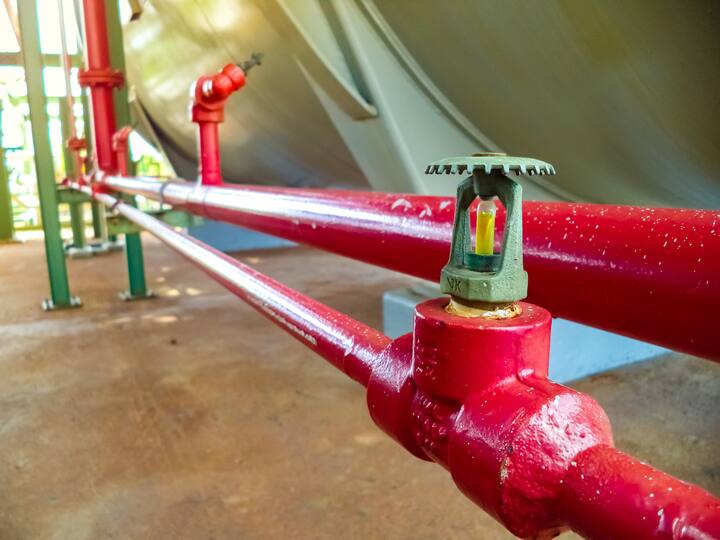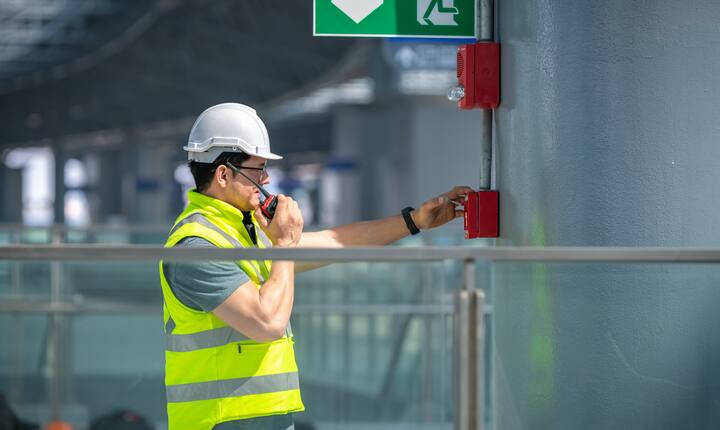
Foam extinguishing system inspections
Extinguisher installation
Buildings must be used safely so that occupants, users and the environment do not face additional risks. The Besluit bouwwerken leefomgeving (Bbl) contains the nationwide regulations for using buildings in a fire-safe manner. In a number of cases there is a deviation from the building code and a fire extinguishing foam system is used to create equivalence with the building code. Water is the most commonly used and suitable extinguishing agent. It has a cooling effect that brings the fuel below its flash point, but can also be suffocating by creating steam. Yet the extinguishing effect of water on a fire also has its limitations. Sometimes water may not come into direct contact with a liquid burning substance. This is the case if water dissolves in that liquid or causes a chemical reaction. Also, if the liquid fuel floats on the extinguishing water, water is not suitable as an extinguishing agent. Extinguishing foam is a solution in these situations.
Why choose Normec?
We have skilled and experienced inspectors.
Each inspector has their own area of expertise and broad knowledge.
Our goal is to be, and remain, a leading player in the market.
We are ISO 17020 accredited to ensure consistent quality.
What is a fire extinguishing foam system?
Extinguishing foams are produced from a mixture of water and foaming agent that is foamed with a noncombustible (inert) gas. Foams are particularly suitable for extinguishing fires by forming a foam blanket that prevents oxygen from contacting the combustible substance.
Because foam is lighter than water, it floats on the liquid burning substance. Extinguishing foam systems are common, for example, at storage tanks containing flammable substances, tank pits, helicopter platforms, airports and aircraft hangars. For more information read the case study on fighting fires in confined spaces.
What is being inspected?
An inspection of an extinguishing foam system looks at the objective. This objective must be traceable from the Basic Design (e.g. PoR). During the inspection the installation is checked and the associated controls tested, but also architectural and organizational issues such as the management of the installation, storage, etc. are looked at. The exact inspection points can be found in the CCV inspection schedule.
Follow-up inspection
Once an initial inspection has been performed, a periodic inspection must then take place. We do this to verify that management is being carried out properly and that the plant is still fulfilling its stated objective. The interval of this inspection is annual, or depending on the requirements set for the object.
Inspection Certificate
An inspection certificate is required to demonstrate that your building meets fire safety standards. During the inspection, the systems, structural provisions, and organizational measures are assessed. If all aspects are in order, you will receive an inspection certificate from us. This serves as proof — for instance to your insurer — that your fire protection complies with the relevant requirements.
These services might also be of interest to you

Fire Alarm System

Sprinkler installation

Evacuation alarm system
Leading companies in this service

Normec FSS
's-Hertogenbosch Netherlands
Curious about what we can do for you?